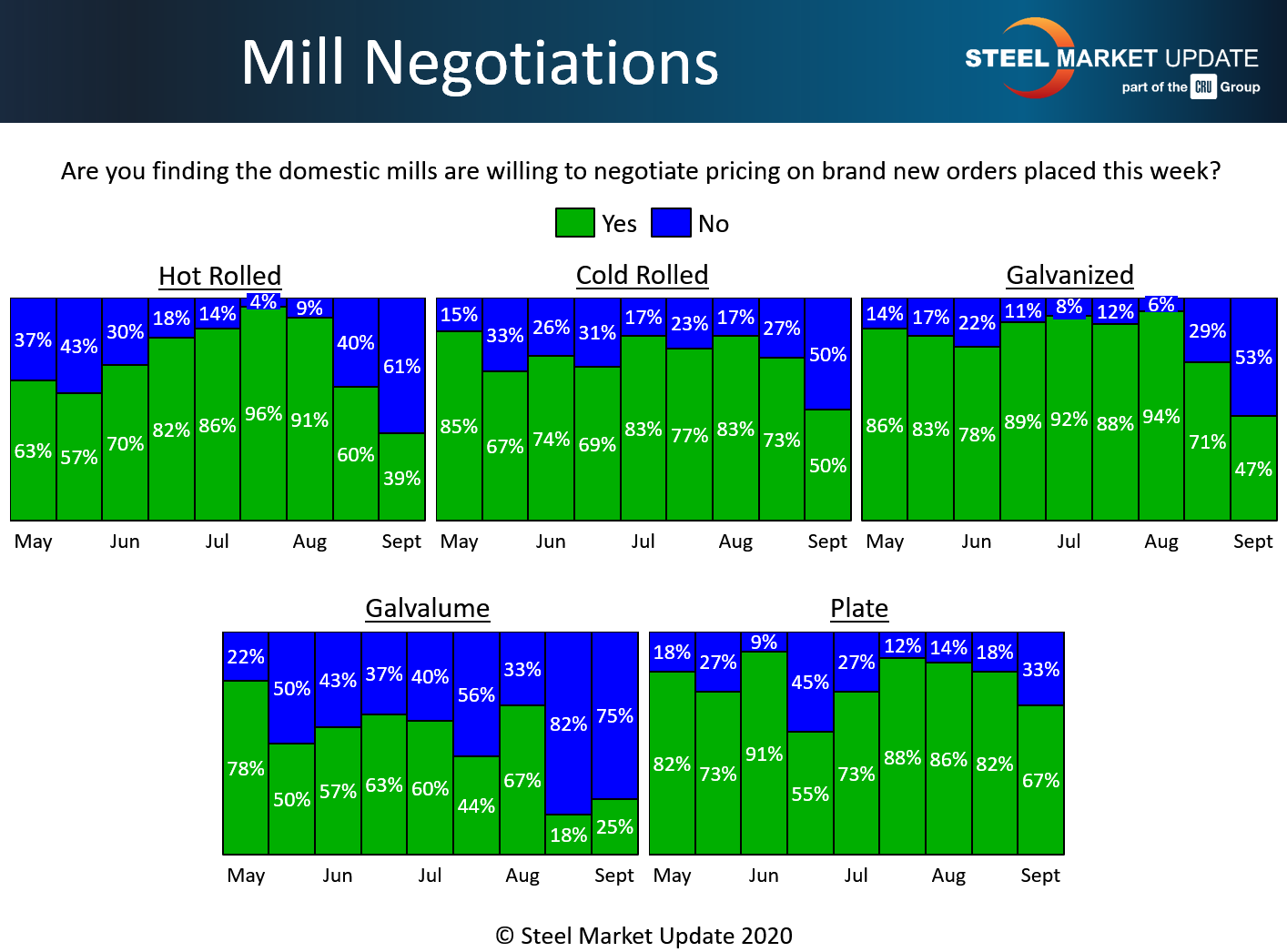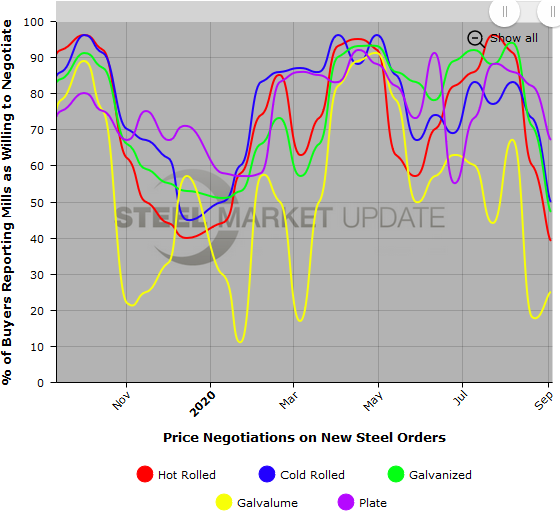SMU Data and Models

Steel Mill Negotiations: No Longer a Buyer's Market
Written by Tim Triplett
September 3, 2020
Flat rolled steel is no longer a buyer’s market as the mills appear less willing to negotiate while they try to collect the price increases they announced late last month. Steel Market Update’s market trends questionnaire this week shows the majority of buyers reporting mills holding the line in price talks on hot rolled, cold rolled and coated steel orders.
About 61 percent of the hot rolled steel buyers responding to SMU’s poll this week said the mills are no longer willing to deal on HR. That’s up from 40 percent two weeks ago. About 39 percent said the mills are still willing to bargain to secure an order.
In the cold rolled segment, it’s a 50-50 proposition whether the mills are willing to talk price. That’s down significantly from the 73 percent who said the mills were open to negotiation two weeks ago.
In galvanized, 47 percent reported the mills still open to discounts, but the majority, 53 percent, said the mills “just say no.” About 75 percent said the mills are holding firm on Galvalume prices, as supplies are expected to tighten in the fourth quarter.
Negotiations are more common in the plate market, where 67 percent said the mills are still willing to bargain to capture the sale, while just 33 percent reported the mills standing pat. That compares to 82 percent vs. 18 percent two weeks ago.
Benchmark hot rolled steel prices now average $515 per ton, based on SMU’s latest check of the market. That’s down from about $560 per ton prior to the pandemic, but up from $440 a ton last month. Steel prices have upward momentum following the recent price increase announcements as the economy continues to slowly recover.

Note: SMU surveys active steel buyers twice each month to gauge the willingness of their steel suppliers to negotiate pricing. The results reflect current steel demand and changing spot pricing trends. SMU provides our members with a number of ways to interact with current and historical data. To see an interactive history of our Steel Mill Negotiations data (example below), visit our website here.


Tim Triplett
Read more from Tim TriplettLatest in SMU Data and Models

SMU’s June at a glance
A look at SMU data for the month of June.

SMU Survey: Buyers’ Sentiment rebounds from multi-year low
Both of SMU’s Steel Buyers’ Sentiment Indices edged higher this week. Current Sentiment rebounded from a near five-year low, while Future Sentiment rose to a two-month high

SMU flat-rolled market survey results now available
SMU’s latest steel buyers market survey results are now available on our website to all premium members.

SMU Survey: Sheet lead times pull back after early-June blip, plate holds
Following the uptick seen two weeks ago, lead times eased this week for all four sheet products tracked by SMU, while plate lead times held steady, according to this week’s market survey.

SMU Survey: Pricing power abruptly shifts to steel buyers
The majority of steel buyers responding to our latest market survey say domestic mills are more willing to talk price on sheet and plate products than they were earlier this month. Sheet negotiation rates rebounded across the board compared to early June, while our plate negotiation rate hit a full 100%.
